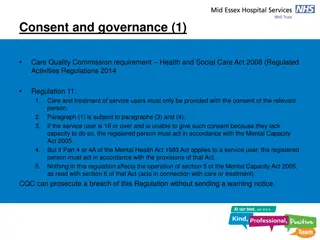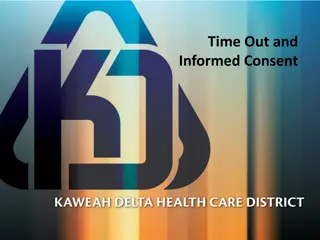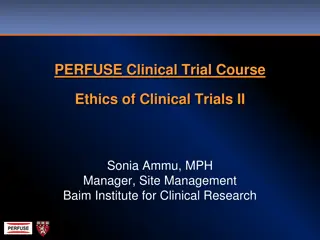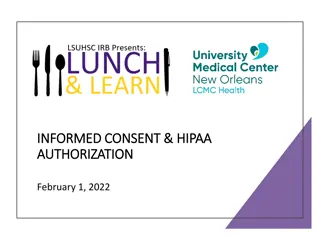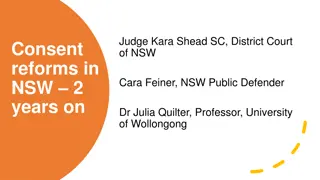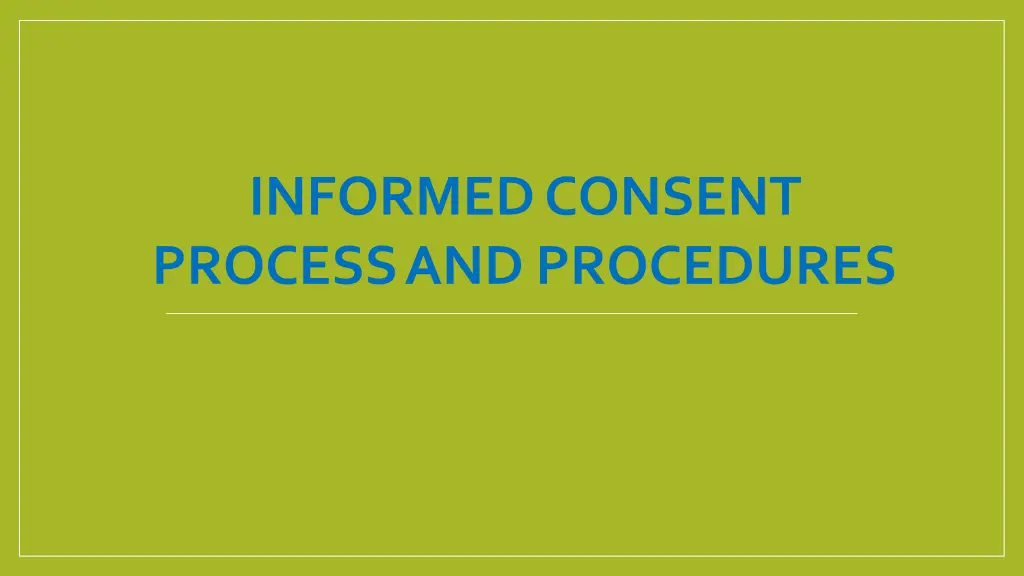
Understanding Informed Consent Process and Procedures
Learn about the definition, guidelines, key elements, and components of the informed consent process in clinical research. Explore the importance of information provision, voluntariness, comprehension, and the proper execution of the consent process.
Download Presentation

Please find below an Image/Link to download the presentation.
The content on the website is provided AS IS for your information and personal use only. It may not be sold, licensed, or shared on other websites without obtaining consent from the author. If you encounter any issues during the download, it is possible that the publisher has removed the file from their server.
You are allowed to download the files provided on this website for personal or commercial use, subject to the condition that they are used lawfully. All files are the property of their respective owners.
The content on the website is provided AS IS for your information and personal use only. It may not be sold, licensed, or shared on other websites without obtaining consent from the author.
E N D
Presentation Transcript
INFORMED CONSENT PROCESS AND PROCEDURES
CONTENTS DEFINITION 1. INFORMEDCONSENTGUIDELINES 2. THEPROCESSOFCONSENT 3. THEPLANOFCONSENT PROCESS 4. ELEMEMTSOFICF 5. COMPONENTSOFICF 6.
DEFINITI ON: A process by which a subject voluntarily confirms his or her willingness to participate in a particular trial, after havingbeen informedof all aspects of thetrialthatarerelevanttothesubject sdecisiontoparticipate. Informed consent is documented by means of a written, signed and datedinformed consentform. The goal of the informed consent process is to provide people with sufficient information so that they can make informed choices about whethertobeginorcontinueparticipationin clinicalresearch.
INFORMED CONSENT GUIDELINES: 1. ICMR (IndianCouncil of MedicalResearch) EthicalGuidelines for BiomedicalResearchonHuman Subjects Publishedin2000andrevisedin2006 2. ICH ICHGuidelines E6 section4.8 underGLP(GoodClinical Practices)
INFORMATION VOLUNTARINESS COMPREHENSION
INFORMATION PROVISIONAND SHARING BY RESEARCHTEAM Discussionandinteractionbetween researchers andpotentialparticipants Trueunderstanding Acceptance orrejectionofparticipation Agreementtoparticipate Endofcontract Followup
THE PROCESS OF CONSENT Choosetherightenvironmentand locationto obtainconsent. Involvemultiplehealthcarepersonnelas necessary. Includefamilymembersintheprocessas warranted. Ensurethat the subjectorLegallyAuthorized Representative is competent. Ensurethe subjectorLARhassufficientunderstanding. Continuethe processofconsentthroughoutthestudy.
THE PLAN OF CONSENT PROCESS 1. Identify obstacles to participation in study and ways to overcome obstacles Identify wordssubjectmaynotunderstand Compile FrequentlyAskedQuestion list 2. 3. Decidewhowilldoconsentdiscussion 4. Decidewhereconsent discussionwill be held Provideadequatetimetoexplainstudyto subject. Provideadequatetimeforsubjecttoreadand considerandforquestions tobeanswered 5. 6. 7.
WHO CAN SIGNTHE INFORMED CONSENT FORM? SubjectorLegallyAcceptable Representative (LAR) 1. 2. Personconductingreviewofconsent. Impartialwitness 3.
ELEMENTS OF INFORMED CONSENT FORM: 1. Essential elements a) Purpose b) Risks Benefits d) Confidentiality e) Compensation Contactinformation g) Voluntaryparticipation c) f)
2. ADDITIONAL ELEMENTS a) Withdrawalcriteria. b) Additionalcoststosubjects. Statementthattheremaybe riskswhich areunforeseeable. d) Approximatenumberofsubjectsinstudy. e) Statementthatwill betoldofnewfindings. c)
COMPONENTS OF ICF (according to ICMR guidelines,2006) Important Information about the Research Study. 1. What is the study about and why are we doing it? 2. Benefits of taking part in the study. Possible risks that might result from being in the study. 3. 4. Certificate of Confidentiality. 5. What will happen to the information collected after study period is over. Compensation for being part of the study. 6. 7. Possible expenditures to a subject to be part of study. 8.
9. Whocanprofitfromstudyresults. 10. Choicesto a subjectif theydon twish to take part in the study. 11. Voluntariness 12. Contactinformationofsubject. 13. Contactinformationofstudyteam. 14. Consent:Name,SignatureandDate 15. ParentorLAR:Name,Signature andDate











